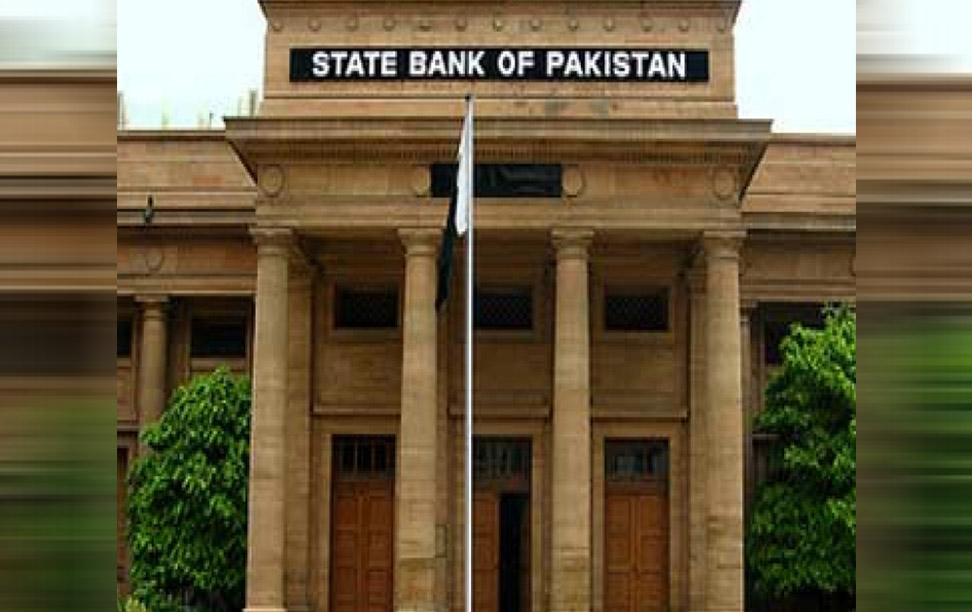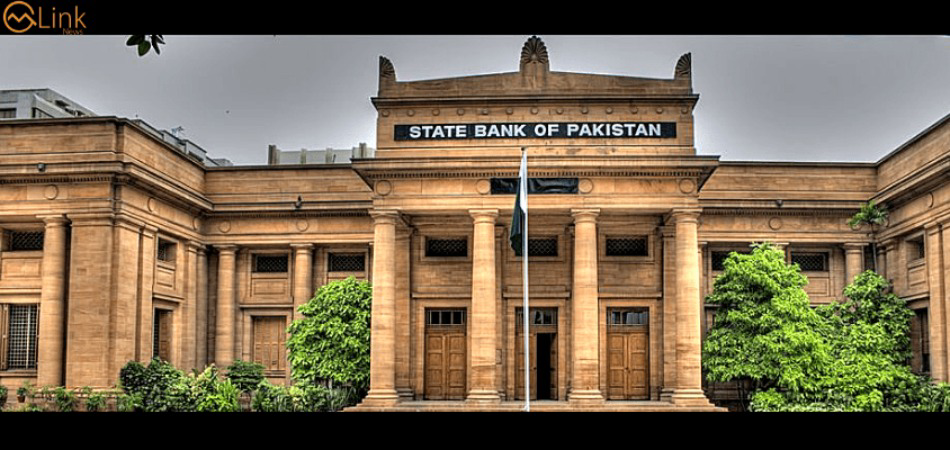SBP raises policy rate by 125 bps to 15 percent

MG News | July 07, 2022 at 05:09 PM GMT+05:00
July 07, 2022 (MLN): The Monetary Policy Committee (MPC) of the State Bank of Pakistan (SBP) in its meeting held today, in Karachi, has decided to raise the policy rate by 125 basis points (bps) to 15 percent to arrest the inflationary pressure.
The outcome of the meeting was in line with the market expectations where the analyst fraternity believed that the monetary policy committee of SBP will go for an aggressive hike of 100 bps or above.
With regards to the inflation outlook, the statement issued by MPC noted, "Despite the dampening effect of fiscal and monetary tightening on demand-pull inflation, inflation is likely to remain elevated around current levels for much of FY23 due to the large supply shock associated with the necessary reversal of fuel and electricity subsidies. As a result, inflation during FY23 is forecast at around 18-20 percent before declining sharply during FY24."
Headline inflation rose significantly from 13.8 percent (y/y) in May to 21.3 percent in June, the highest since 2008. The increase was broad-based—with energy, food, and core inflation all rising significantly—and more than 80 percent of the items in the CPI basket experienced inflation of above 6 percent. Strong domestic demand and second-round effects of supply shocks are reflected in the rise of core inflation to 11.5 percent in urban areas and 13.5 percent in rural areas.
In addition, as foreshadowed in the last monetary policy statement, the interest rates on EFS and LTFF loans are now being linked to the policy rate to strengthen monetary policy transmission, while continuing to incentivize exports by presently offering a discount of 500 basis points relative to the policy rate, the statement issued by SBP on Thursday said.
This combined action continues the monetary tightening underway since last September, which is aimed at ensuring a soft landing of the economy amid an exceptionally challenging and uncertain global environment. It should help cool economic activity, prevent a de-anchoring of inflation expectations and provide support to the Rupee in the wake of multi-year high inflation and record imports.
Since the last meeting, the MPC noted three encouraging developments. First, the unsustainable energy subsidy package was reversed and an FY23 budget centered on strong fiscal consolidation was passed. This has paved the way for the completion of the ongoing review of the IMF program, which will ensure that tail risks associated with meeting Pakistan’s external financing needs are averted.
Second, a $2.3 billion commercial loan from China helped provide support to FX reserves, which had been falling since January due to current account pressures, external debt repayments, and paucity of fresh foreign inflows. Third, economic activity remains robust, with the momentum of the last two years of near 6 percent growth carrying into the start of FY23. As a result, Pakistan faces a significantly lower trade-off between growth and inflation than many countries where the post-Covid recovery has not been as vigorous.
However, several adverse developments have overshadowed this positive news. Globally, inflation is at multi-decade highs in most countries and central banks are responding aggressively, leading to depreciation pressure on most emerging market currencies.
This strong monetary tightening has occurred despite concerns about a slowdown in global growth and even recession risks, highlighting the primacy that central banks are placing on containing inflation at this juncture. Domestically, as energy subsidies were reversed, both headline and core inflation increased significantly in June, rising to a 14-year high.
Inflation expectations of consumers and businesses also rose markedly. At the same time, the current account deficit unexpectedly spiked in May and the trade deficit continued its post-March widening trend to reach a 7-month high in June, on burgeoning energy imports. As a result, FX reserves and the Rupee remained under pressure, further worsening the inflation outlook, the statement further added.
Against this challenging backdrop, the MPC noted the importance of strong, timely, and credible policy actions to moderate domestic demand, prevent the compounding of inflationary pressures and reduce risks to external stability. Like most of the world, Pakistan is facing a large negative income shock from high inflation and necessary but difficult increases in utility prices and taxes. Without decisive macroeconomic adjustments, there is a significant risk of substantially worse outcomes that would compromise price stability, financial stability, and growth.
This could take the form of runaway inflation, FX reserve depletion, and the need for sudden and aggressive tightening actions later that would be significantly more disruptive to economic activity and employment. Adjustment is difficult but necessary in Pakistan, as it is all over the world. However, in the interest of social stability, the burden of this adjustment must be shared equitably across the population, by ensuring that the relatively well-off absorb most of the increase in utility prices and taxes while well-targeted and adequate assistance is provided to the more vulnerable.
Under the MPC’s baseline outlook, headline inflation is likely to remain elevated around current levels for much of FY23 before falling sharply to the 5-7 percent target range by the end of FY24, driven by tight policies, normalization of global commodity prices, and beneficial base effects.
While risks exist on both sides, those of significantly higher inflation dominate, prompting today’s rate increase. Going forward, the MPC will remain data-dependent, paying particularly close attention to month-on-month inflation, the evolution of inflation expectations and global commodity prices, as well as developments on the fiscal and external fronts.
Real sector:
Pakistan’s strong economic rebound from Covid continues, with the level of output surpassing pre-pandemic levels, unlike in many other emerging markets. The needed moderation in economic activity that was occurring through FY22 in response to monetary tightening has stalled in the last three months, fueled by an unwarranted fiscal expansion.
Most demand indicators suggest robust growth since the last MPC—sales of cement, POL, and automobiles increased month-on-month—and growth in LSM remains high. Looking ahead, growth is expected to moderate to 3-4 percent in FY23, on the back of monetary tightening and fiscal consolidation, helping to close the positive output gap and diminish demand-side pressures on inflation. This will pave the way for higher growth on a more sustainable basis.
External sector:
After moderating in the previous three months, the current account deficit rose to $1.4 billion in May, on the back of lower exports and remittances partly due to the Eid holiday. Based on PBS data, the trade deficit rose to $4.8 billion in June, more than $1.7 billion higher than its February low. While non-energy imports have continued to moderate in the last three months on the back of curtailment measures by the government and the SBP, this decline has been more than offset by the significant increase in energy imports, which rose from a low of $1.4 billion in February to an estimated record high of $3.7 billion in June.
While this partly reflects higher prices, significantly higher volumes of petroleum also played a significant role. Without prompt additional measures to curtail energy imports—for instance through early closure of markets, reduced electricity use by residential and commercial customers, and greater encouragement of work from home and carpooling—containing the trade deficit could become challenging.
With such measures, the current account deficit is projected to narrow to around 3 percent of GDP as imports moderate with cooling growth, while exports and remittances remain relatively resilient. The expected completion of the ongoing IMF review will catalyze important additional funding from external sources that will ensure that Pakistan’s external financing needs during FY23 are met. Pressures on the Rupee should then attenuate and SBP’s FX reserves should gradually resume their previous upward trajectory during the course of FY23.
Fiscal sector: The fiscal stance in FY22 was unexpectedly expansionary, with the primary deficit estimated at 2.4 percent of GDP, double that of the previous year, and more than thrice the budgeted primary deficit of 0.7 percent of GDP.
To compensate for this unwarranted fiscal impulse, this year’s budget targets a primary surplus of 0.2 percent of GDP, on the back of significantly higher tax revenue. This consolidation is appropriate given the very rapid economic growth rate of the previous two years and the need to ensure debt sustainability amid high gross financing needs due to the relatively short maturity of Pakistan’s domestic debt.
It is critical that the envisaged fiscal consolidation is delivered. It would allow monetary and fiscal policy to resume the well-coordinated approach that characterized Pakistan’s successful Covid response in FY20 and FY21, which supported growth while preserving fiscal and external buffers. At the same time, it is important that the new taxation measures are progressive.
In particular, their burden should mainly be absorbed by the relatively better off while adequate protection is provided to the more vulnerable, for whom high food prices are a particular concern. In this context, curbing food inflation through supply-side measures aimed at boosting output and resolving supply-chain bottlenecks should be a high priority.
Monetary outlook:
In nominal terms, private sector credit grew by a further 2 percent (m/m) in May, driven by favorable developments in sectors like power, edible oil, construction-allied industries, as well as wholesale and retail trade. Demand for fixed investment and consumer loans also picked up, reflecting robust economic activity. Since the last MPC meeting, secondary market yields and cut-off rates in the government’s auctions have ticked up in the wake of the high inflation reading in June.
Despite the dampening effect of fiscal and monetary tightening on demand-pull inflation, inflation is likely to remain elevated around current levels for much of FY23 due to the large supply shock associated with the necessary reversal of fuel and electricity subsidies. As a result, inflation during FY23 is forecast at around 18-20 percent before declining sharply during FY24.
This baseline outlook is subject to significant uncertainty, with risks arising from the path of global commodity prices, the domestic fiscal policy stance, and the exchange rate. The MPC will continue to carefully monitor developments affecting medium-term prospects for inflation, financial stability, and growth and will take appropriate action to safeguard them.
Copyright Mettis Link News
Related News
| Name | Price/Vol | %Chg/NChg |
|---|---|---|
| KSE100 | 134,299.77 290.06M |
0.39% 517.42 |
| ALLSHR | 84,018.16 764.12M |
0.48% 402.35 |
| KSE30 | 40,814.29 132.59M |
0.33% 132.52 |
| KMI30 | 192,589.16 116.24M |
0.49% 948.28 |
| KMIALLSHR | 56,072.25 387.69M |
0.32% 180.74 |
| BKTi | 36,971.75 19.46M |
-0.05% -16.94 |
| OGTi | 28,240.28 6.19M |
0.21% 58.78 |
| Symbol | Bid/Ask | High/Low |
|---|
| Name | Last | High/Low | Chg/%Chg |
|---|---|---|---|
| BITCOIN FUTURES | 118,140.00 | 119,450.00 115,635.00 |
4270.00 3.75% |
| BRENT CRUDE | 70.63 | 70.71 68.55 |
1.99 2.90% |
| RICHARDS BAY COAL MONTHLY | 97.50 | 0.00 0.00 |
1.10 1.14% |
| ROTTERDAM COAL MONTHLY | 108.75 | 108.75 108.75 |
0.40 0.37% |
| USD RBD PALM OLEIN | 998.50 | 998.50 998.50 |
0.00 0.00% |
| CRUDE OIL - WTI | 68.75 | 68.77 66.50 |
2.18 3.27% |
| SUGAR #11 WORLD | 16.56 | 16.60 16.20 |
0.30 1.85% |
Chart of the Day
Latest News
Top 5 things to watch in this week
Pakistan Stock Movers
| Name | Last | Chg/%Chg |
|---|
| Name | Last | Chg/%Chg |
|---|



